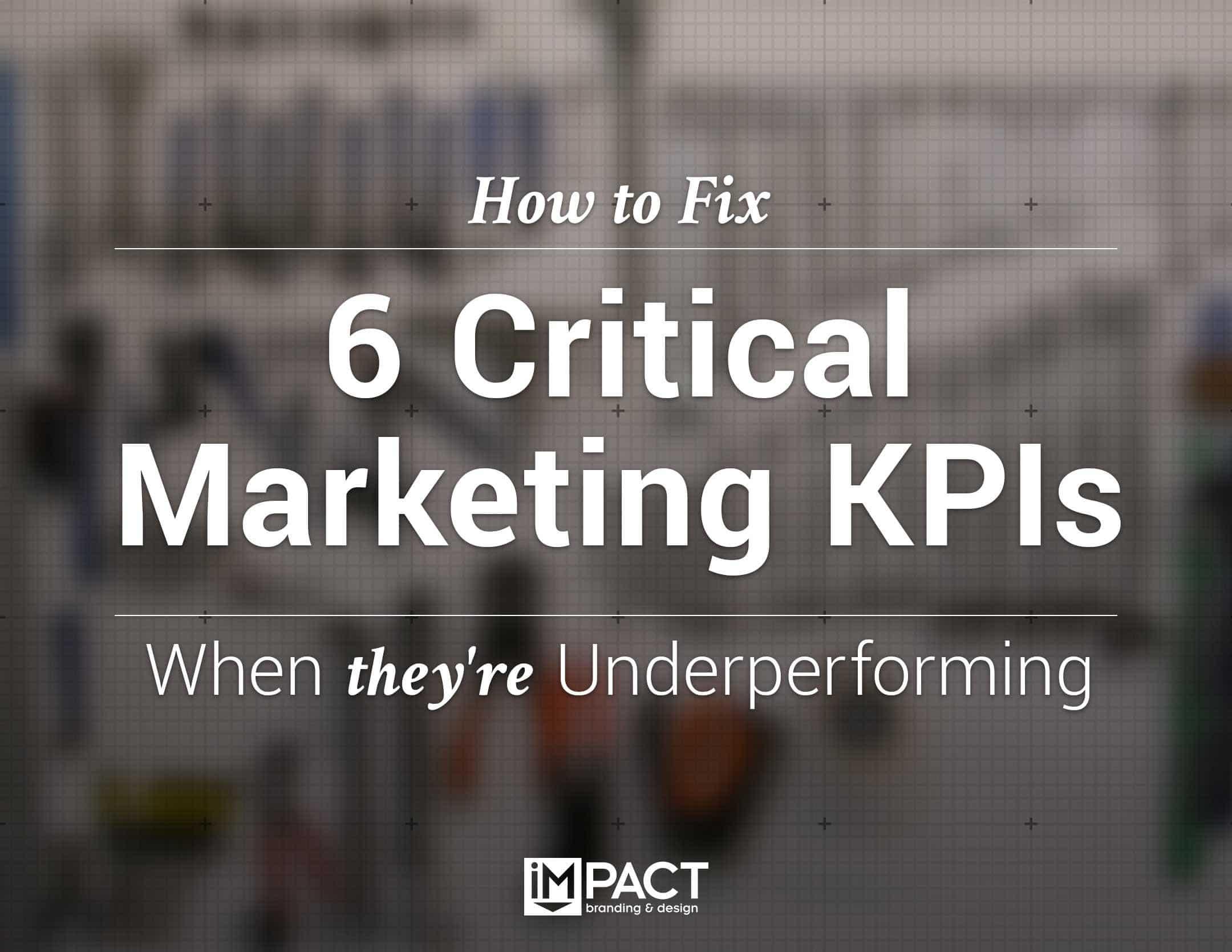
John Bonini
Marketing Director, @bonini84
As the Marketing Director at IMPACT Branding & Design, John oversees the company’s entire lead generation and branding strategy, utilizing blogging, premium content creation, social media marketing, search engine optimization and video marketing in order to help grow the company and expand its reach.
Under John’s direction, IMPACT has experienced significant growth in its blog subscribers, social media following, as well the company’s overall traffic and lead generation.
In addition to his work at IMPACT, John has also been interviewed and featured in several industry leading publications, including the Wall Street Journal’s SmartMoney, MarketWatch, as well as the HubSpot blog.
Design & Layout by Bobby Kane (@bobbyjkane)
Foreword
"With great power comes great responsibility."
The famous words of Peter Parker's Uncle Ben - or Voltaire if you want to be historically accurate - aren't just words to live by for young crime fighters. These words should be etched permanently into the mission statement of your marketing team, scrawled on the cubicle walls of every blogger at your company.
What we do affects the entire sales funnel. The content we create as marketers drives the all-important first touch - a moment of awareness and delight that will stick with a person through all their engagements with your company and life as a customer.
Use this ebook as a map to the executive brain. Know the numbers your boss cares about, and the numbers his boss cares about. It will help you tie your team's never-ending quest for big ideas and innovative thinking to board level numbers.
 Patrick Shea, Channel Marketer Manager @HubSpot
Patrick Shea, Channel Marketer Manager @HubSpot
@mpatrickshea
Revenue and cost efficiency are the primary concern of upper management, so while Sales may be closing deals, further analysis shows that your marketing budget is rendering your customer acquisition cost high. Perhaps it’s happened gradually, but after adding up the cost of all marketing and advertising initiatives, salaries, commissions, and bonuses, it’s become evident that new business isn’t doing enough to offset this cost. Not only that, but it’s also taking longer for new business to become profitable given the high cost of acquisition.
Obviously, this isn’t an ideal model for growth.
The Solution:
There can be several culprits here. First off, your sales cycle may be too long and laborious, which results in your sales team having to do most of the nurturing. Make sure Sales and Marketing have clearly defined the criteria for qualified leads, which ensures marketing can do a more effective job of educating prospects as well as nurture them with more targeted, segmented content to effectively shorten the sales cycle.
For instance, it’d be a good idea to schedule a sales and marketing alignment meeting in order for both teams to establish an understanding of how leads are organized, and also what the qualification process looks like. You may discover that marketing may need to refocus their content strategy with more service/product-focused content that appeals to your target audience more effectively.
It's also critical that you’re monitoring which marketing initiatives are delivering high (and low) conversion rates so you can appropriately allocate your resources toward the high-ROI campaigns. For instance, you might notice leads that come from your business blog are cheaper to acquire, and easier to close; naturally, this (and other similar channels) is where you should be investing more resources -- so you can get more leads and customers from your cheapest sources.
While all is well in regard to your customer acquisition cost, the marketing percentage of your CAC has actually risen, signaling either that you’re spending more on your marketing (perhaps in an effort to deliver more quality leads to sales), or sales costs are lower due to missed quotas. Either way, this is an early warning sign that your strategy is losing its effectiveness.
In order to identify the issue, start by looking further into your marketing costs and initiatives. You’ll probably notice an increase in your marketing cost (or a decrease in sales cost). This will help to identify which area needs to be addressed.
The Solution:
You need a leaner marketing strategy. For instance, look closely at conversion rates and traffic analytics in order to identify which initiatives are performing. It’s critical that sales is involved, as this will also further establish which initiatives are assisting in the sales process and allow marketing to execute a more efficient strategy.
You also need to make sure your sales process hasn’t lost effectiveness, as a higher M%-CAC can also mean a lower sales cost due to underperformance. For instance, take a look at your lead management strategy and look for ways to identify quality leads quicker and shorten the sales process. Make sure your CRM is up-to-date, and consider implementing custom lead scoring to ensure only the most qualified of leads make it on the phone with your sales team.
Oftentimes LTV metrics can be misleading on the surface, as what may seem like success -- i.e., a 6:1 LTV:CAC ratio -- is actually a sign that you’re under-investing in sales and marketing, and as a result, leaving the door wide open for your competitors.
On the other hand, if your ratio is low -- say 1:1 -- it’s more apparent that you’re actually losing money the more you sell. Either way, this isn’t the recipe for growth your CEO is looking for. In order to increase revenue and maximize the potential for profitability, it’s essential that your LTV:CAC ratio is healthy, ensuring that the current value of a customer compared to what you spent to acquire them is around 4:1.
The Solution:
If after computing your LTV:CAC ratio you find it’s alarmingly low, there are a few areas to assess in order to get back to profiting. First, there’s a good chance your cost to acquire a customer is much too high. Take a step back and review your analytics in order to identify what’s working and what isn’t. Your pricing strategy may also need to be reevaluated.
Most importantly, if you have a recurring revenue model, your churn rate may be very high, which means your customers aren’t happy. Assess the expectations you’ve set, the quality of service, as well as your process for renewal.
If your ratio is very high, this may signal that you’re under-investing in sales and marketing, and as a result, leaving a high volume of opportunities on the table for your competitors to sweep up. Since this ratio is high, the margins are there for you to increase spending on marketing and advertising to generate new business and accelerate growth.
New business seems to be steady, but that feeling of treading water hasn’t changed. It’s taking your company too long to profit from new business due to a longer “time to payback CAC.” Common in a retainer-based model, you would usually want the payback time to be less than a year. However, yours is far greater, and it’s affecting cash flow as well as any potential growth for the business.
If your customer acquisition cost is $50,000, yet a year later you’ve only grossed $36,000 from the customer, you aren’t profiting. Due to the fact that you are generating new business, it’s clear that your pricing model may need an adjustment.
The Solution:
There are three areas to address here, the first being your pricing model. You may need to adjust not only your overall pricing, but also the structure by which you’re receiving payments. For instance, if possible, you may want to develop a model where you receive more payment up front to ensure you’re profitable earlier.
Also, your sales team needs to include your current contact list in the sales process to maximize the value of each customer. For example, you could nurture your current customer database into other relevant revenue streams.
Lastly, in order to improve your payback time, address the problem before it even begins. Make adjustments to your marketing automation strategy in order to more effectively nurture leads through your sales funnel quicker. For instance, marketing should focus on analyzing how their personas are digesting and engaging with content, and should develop more targeted workflows that speak to their specific challenges and needs. A quicker nurturing and sales process also means a cheaper customer acquisition cost.
So you’ve got an effective closed-loop reporting system in place. (Nice!) However, you’ve also noticed that the percentage of new customers that started as a marketing generated lead has dropped. Be careful not to pass this off as more of a credit to sales than it is a red flag in your marketing strategy.
According to HubSpot’s CMO Mike Volpe, companies supported with an inside sales team could see an average of 40-80% of new customers starting as a marketing lead. If you’re experiencing a significantly lower percentage, you’re surely experiencing a slower growth potential, and your sales team is working harder to work their contacts and connections from outbound sources in order to meet projections.
The result? A much longer sales process, as well as less qualified leads.
The Solution:
Resist the urge to call a marketing team meeting and call for more lead generating offers for publication yesterday. Your lead generation strategy may not be the main culprit here, but rather your lead management.
Take a more granular approach to your lead nurturing and ensure that you’re providing your leads with the right information at the right stage of the buying cycle. The problem may not be that you’re not generating enough leads, but rather that you’re simply not nurturing your existing leads effectively enough through the sales funnel.
Similar to Marketing Originated Customer %, these are all new customers who were touched by marketing at any time before closing, even if generated by sales. This percentage should be higher than the aforementioned Marketing Originated Customer %, so when it’s not and marketing is losing influence over any new business, you likely have an overworked sales team.
Any salesperson will tell you that a well-executed assist from marketing can really have a significant impact on their sales pipeline. Without it, your sales team may be twisting in the wind looking to close deals.
The Solution:
Marketing’s job shouldn’t end once a lead has been delivered to the sales team. More importantly, leads generated by sales will benefit greatly from the right form of engagement, and as a result, will be much more likely to close.
Turn these tips into Actual Results
How Can You Improve Your Inbound Marketing and Achieve Your Business Goals?
In your free assessment, you'll receive:
- A 30 minute conversation with an inbound marketing consultant.
- An evaluation your current website and marketing strategy.
- Suggestions for improvement.
- Ideas on how to measure the return on your marketing investment.
- Real solutions to achieve your business and marketing goals.
This is not a sales call and you'll have no-obligation to buy anything. If after the assessment you feel IMPACT can help you achieve your marketing goals, we'll schedule a second call to start developing your inbound marketing strategy.


